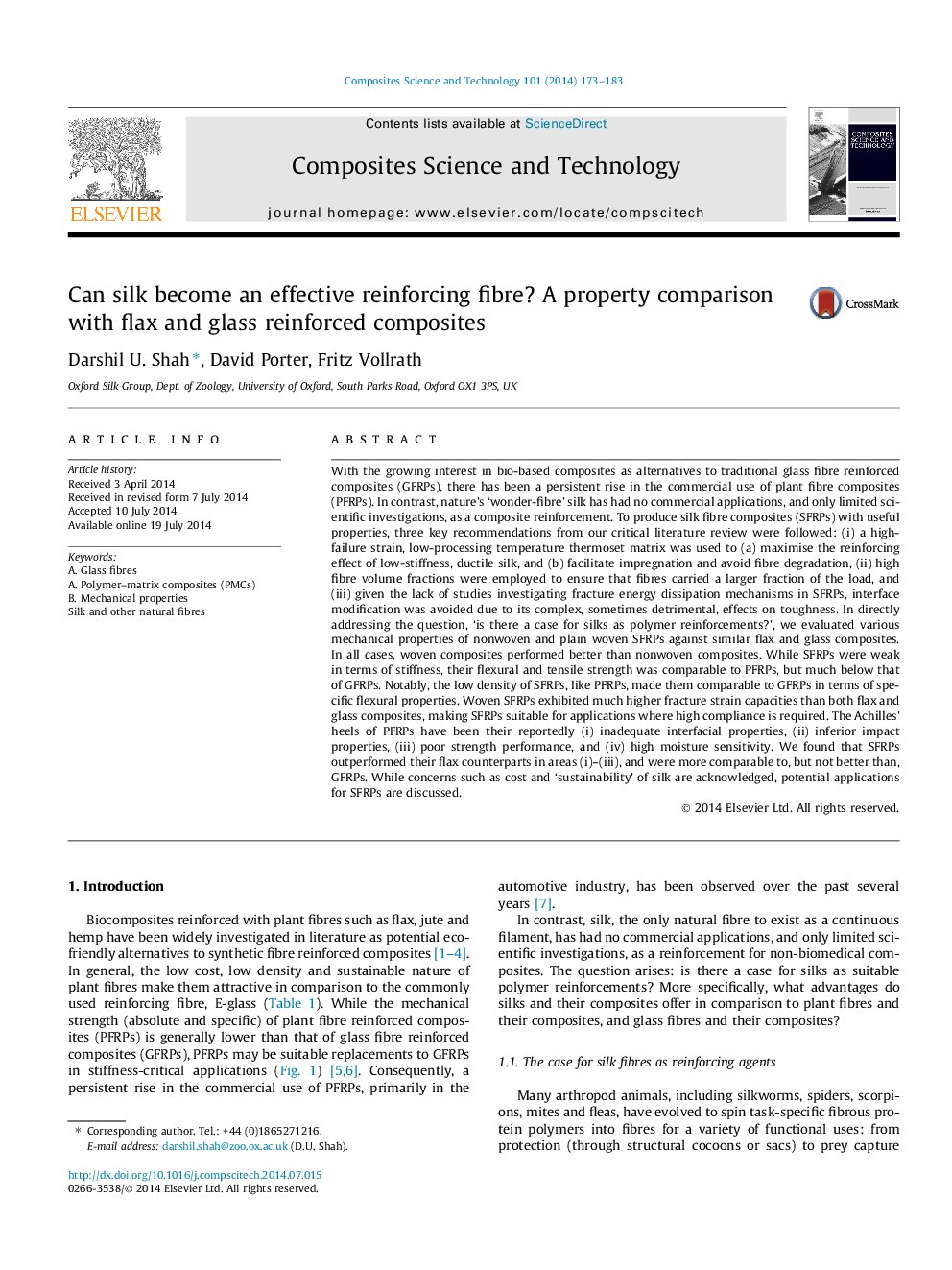| کد مقاله | کد نشریه | سال انتشار | مقاله انگلیسی | نسخه تمام متن |
|---|---|---|---|---|
| 820237 | 1469524 | 2014 | 11 صفحه PDF | دانلود رایگان |
With the growing interest in bio-based composites as alternatives to traditional glass fibre reinforced composites (GFRPs), there has been a persistent rise in the commercial use of plant fibre composites (PFRPs). In contrast, nature’s ‘wonder-fibre’ silk has had no commercial applications, and only limited scientific investigations, as a composite reinforcement. To produce silk fibre composites (SFRPs) with useful properties, three key recommendations from our critical literature review were followed: (i) a high-failure strain, low-processing temperature thermoset matrix was used to (a) maximise the reinforcing effect of low-stiffness, ductile silk, and (b) facilitate impregnation and avoid fibre degradation, (ii) high fibre volume fractions were employed to ensure that fibres carried a larger fraction of the load, and (iii) given the lack of studies investigating fracture energy dissipation mechanisms in SFRPs, interface modification was avoided due to its complex, sometimes detrimental, effects on toughness. In directly addressing the question, ‘is there a case for silks as polymer reinforcements?’, we evaluated various mechanical properties of nonwoven and plain woven SFRPs against similar flax and glass composites. In all cases, woven composites performed better than nonwoven composites. While SFRPs were weak in terms of stiffness, their flexural and tensile strength was comparable to PFRPs, but much below that of GFRPs. Notably, the low density of SFRPs, like PFRPs, made them comparable to GFRPs in terms of specific flexural properties. Woven SFRPs exhibited much higher fracture strain capacities than both flax and glass composites, making SFRPs suitable for applications where high compliance is required. The Achilles’ heels of PFRPs have been their reportedly (i) inadequate interfacial properties, (ii) inferior impact properties, (iii) poor strength performance, and (iv) high moisture sensitivity. We found that SFRPs outperformed their flax counterparts in areas (i)–(iii), and were more comparable to, but not better than, GFRPs. While concerns such as cost and ‘sustainability’ of silk are acknowledged, potential applications for SFRPs are discussed.
Journal: Composites Science and Technology - Volume 101, 12 September 2014, Pages 173–183
